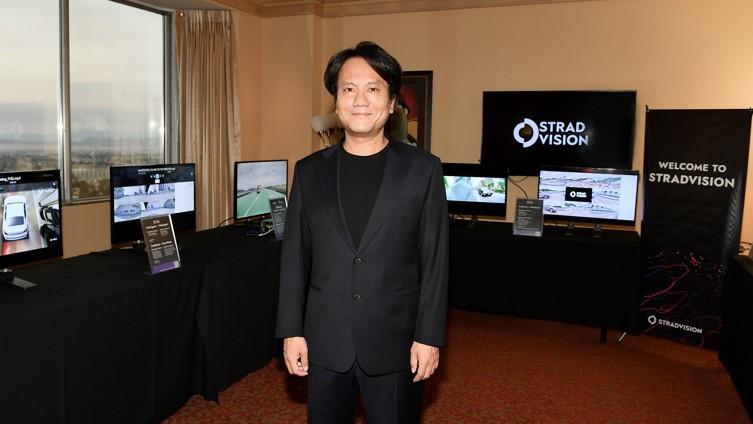The hype over a glorious future for self-driving cars that will arrive in a few short years is arguably behind us, according to industry experts. Some tough realities have finally set in.
Evidence of the current state of self-driving was on display at CES 2023 in Las Vegas in early January where a raft of concept vehicles were shown off and even a few self-driving road demonstrations were held on pre-determined courses, sometimes on public roads and interstates, including a Qualcomm Snapdragon demonstration.
RELATED: My Qualcomm Snapdragon test ride redux at CES 2023: Hamblen
Self-driving demonstrations and roll outs are also being held in other public locales in China and Europe, including rides in self-driving taxis and designated zones for self-driving vehicles. The US is behind, but Waymo and Cruise self-driving vehicles are making their way through traffic in San Francisco, among various tests in other cities and states.
In West Hall at LVCC, more than 300 vehicle companies and component and software providers showed off their contributions to the massive supply chain designed to help autonomous vehicle development and manufacturing. Off the show floor at CES, Seoul-based StradVision showed off its SVNet perception software product portfolio, including demonstrations of how the software works when using TDA4 processors from Texas Instruments.
StradVision Chief Technology Officer Jack Sim offered his take on the current state of self-driving tech in a Zoom interview with Fierce Electronics.

“Autonomous tech is taking longer than most people thought,” Sim offered. “It’s harder to build self-driving tech than everyone imagined.”
However, he added: “This year is going to be different, for example, with Waymo and Cruise in San Francisco. It’s gone slower than people thought and also more expensive. It will still be a while before companies can become profitable.
“The hype is already behind us. When you came to conferences several years ago, hundreds of companies thought they could build AI [for vehicles] and after a couple of years, many of those didn’t survive or have been acquired.”
Sim said StradVision, a company of 320 engineers and other staff first started in 2014, is currently focused on partial autonomous driving for the lower-cost sector. “How effectively can we reach mass market production with mass production of our technology? It’s fair to say that Stradvision has survived, but where can we can provide our proven technology at production grade?”
In fact, StradVision is not only focused on providing software to OEMs and Tier 1 providers for $35,000 cars, but even for $10,000 cars, including cars based on internal combustion engines, not necessarily electric, Sim said.
Asked what is holding back self-driving, Sim agreed it is not the technology per se, but regulators. “China is much more aggressive by supporting these autonomous driving companies,” Sim said. “It’s about how open the Chinese are to test the technology. Some cities there even have designated zones only for autonomous vehicles.”
In the US, so much of the permitting for self-driving is done by cities and states, making nationwide adoption more complex, he and others have argued.
StradVision’s competitors include Mobileye, Autobrain and Helm.AI, he said. While Mobileye provides software for use with sensors and chips, StradVision offers AI-based perception software for cameras, so far, that Tier 1 companies can use it to rebuild as they see fit. Qualcomm bought Arriver, another StradVision competitor, a year ago.
Some of the collaborations between various chip providers are not going well, Sim said. “There’s a clear reason for where we are today. Tesla was a little bit too aggressive at first and when the tech arrived, everybody was disappointed. But I think in the coming few years, there will be significant acceleration of autonomous tech in the market. Some companies are now intentionally keeping their outlook and optimism slow.”
While his company is currently focused on perception software for cameras in vehicles, StradVision is also open to sensor fusion for lidar and radar. “We are now focusing on cameras for sensing, but that doesnt’ mean we have been solely working on camera,” Sim said."Once we feel we have hit the timing right, then we also have some internal research trying to do the sensor fusion using lidar and sonar sensors."
StradVision had already worked with TI on software for its chips before the January announcement of SVnet perception software for TI’s TDA4 processor. The partnership is significant, partly because of the enormous global reach of TI into the auto sector. The TDA4 was labeled in 2020 as part of the Jacinto family for ADAS and Autonomous vehicles to support multiple functions for vehicles and everything from industrial mobile robots to off-highway vehicle controls.
SVNet is advertised as offering TDA4 chips high performance with low power consumption and a reduced bill of materials to enable the lower cost, mass-market adopt of ADAS systems that Sim mentioned.
“Enabling more cars on the road with advanced driver assistance capabilities can lead to greater driver comfort and improved road safety,” said Aish Dubey, general manager of auto processors at TI, in a statement. “Hardware-optimized SVNet software makes it possible for automotive designers to leverage our automotive system-on-chip products to enable surround-view vision, helping them improve the driver experience and road safety.”
Surround-view can help with automated parking assist and valet parking, among other features.